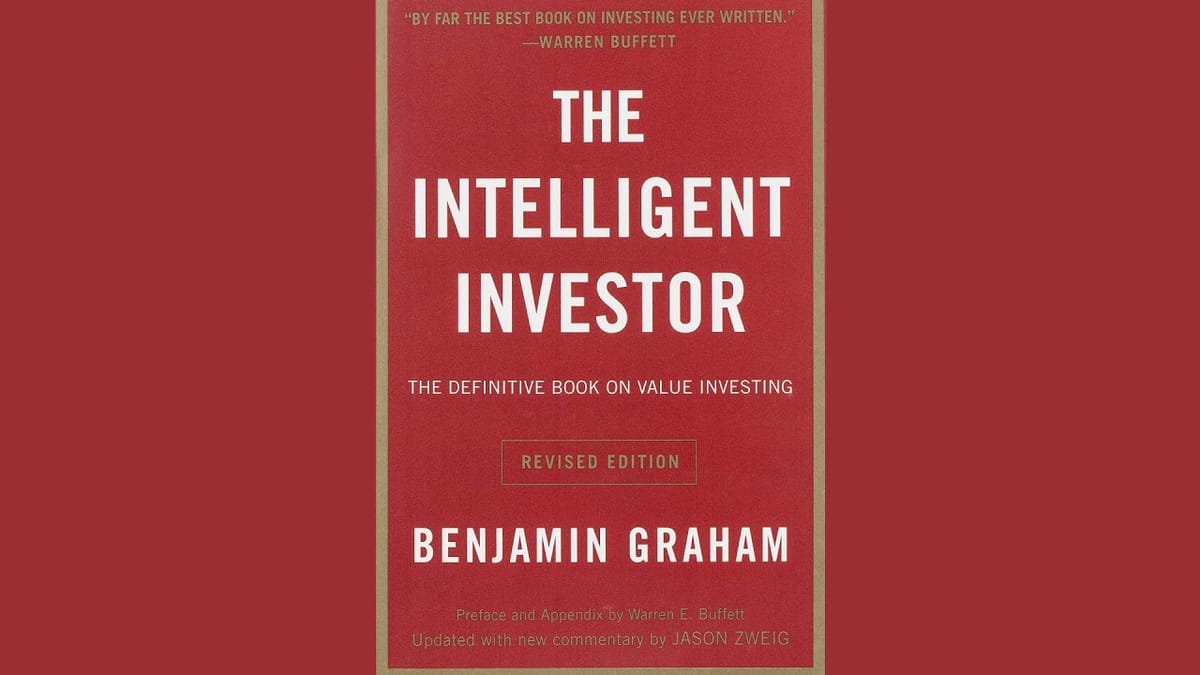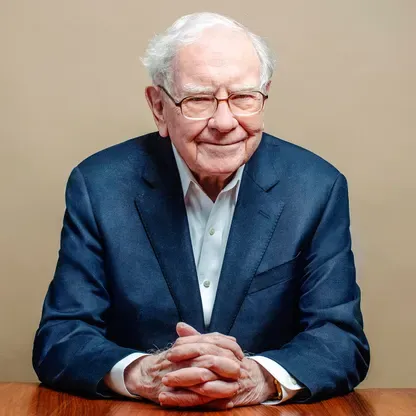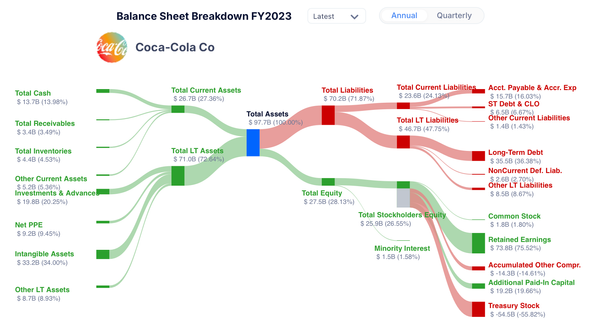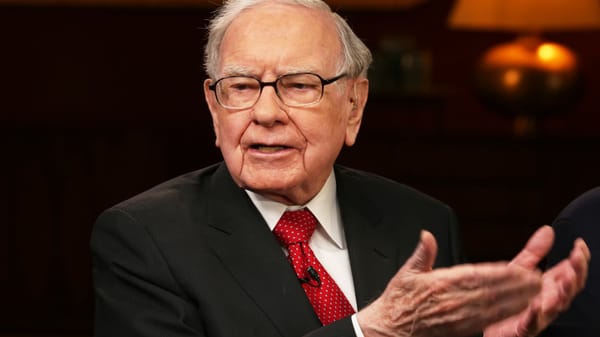Book Review: The Intelligent Investor by Benjamin Graham
In The Intelligent Investor, Benjamin Graham teaches that successful investing is about discipline, patience, and viewing stocks as true business ownership. His timeless lessons on ignoring market noise and using a margin of safety make this classic an essential guide for long-term wealth building.

"The Intelligent Investor" by Benjamin Graham is a landmark text in the world of investing. While it's easy to get swept up in tales of high-flying stock picks and adrenaline-pumping trades, Graham’s approach is the opposite: steady, rational, and, above all, intentional. For anyone interested in building wealth over the long term—not just "winning" in the market—this book is essential reading.
Graham's Philosophy: Investing with Intelligence, Not Emotion
The central thesis of Graham's book is refreshingly simple but powerful: successful investing doesn’t depend on luck or genius-level IQ. Instead, it requires a strong framework for decision-making and the emotional restraint to stick with it, regardless of market euphoria or panic. Graham’s philosophy isn’t about short-term wins but about establishing a mindset and method that will guide readers through decades of market cycles.
Graham’s own words, “The investor’s chief problem—even his worst enemy—is likely to be himself,” underscore the importance of emotional discipline in investing. This isn't a book about stock-picking magic; it's about building a strategy resilient to external noise and one’s own inclinations to overreact.
Key Lessons: Practical and Timeless Wisdom
1. Mr. Market – Your Irregular Business Partner
The iconic metaphor of Mr. Market illustrates the erratic nature of stock prices and, by extension, the potential irrationality of the market. Graham invites readers to view the stock market as a bipolar character who offers to buy or sell at different prices every day. Mr. Market’s valuations are unreliable, as they reflect moods rather than the business's true worth.
For investors, this metaphor is a reminder to tune out daily price fluctuations and instead focus on the intrinsic value of the companies they hold. Stocks represent real ownership stakes, not just ticker symbols, and Mr. Market’s quotes are optional opportunities—not mandates. Graham advises only trading with Mr. Market when he’s offering a compelling deal—high prices for selling or low prices for buying—an approach that both grounds the investor and opens the door to smart, value-based decisions.
2. The Defensive Investor: Building a Fortress of Stability
Graham recognizes that not everyone has the time, energy, or desire to dive deeply into stocks. For these “defensive” investors, he prescribes a balanced, diversified approach. His strategy centers on building a portfolio split between stocks and bonds, often around a 50-50 balance. Rebalancing this allocation regularly, perhaps yearly, ensures that investors don’t become overexposed to one asset class as markets shift.
Within the stock component, defensive investors are encouraged to pick 10-30 well-established companies that pay consistent dividends, have solid financials, and have a history of growth. This isn’t about chasing trendy tech stocks or speculating on the next big thing; it’s about steady, stable returns from companies with proven track records. By doing so, defensive investors shield themselves from market swings and create a solid foundation for wealth-building over time.
3. The Enterprising Investor: For Those Who Want to Dig Deeper
The book also speaks to “enterprising” investors—those who have the time and motivation to conduct detailed analysis and research. This approach is for people willing to put in the hours, have the discipline to wait for the right opportunities, and are comfortable riding out volatility. But even for enterprising investors, Graham is wary of “growth stocks”—often hyped and overvalued based on speculative future earnings. Instead, he suggests seeking out undervalued companies, especially those trading below their net working capital, providing a cushion of intrinsic value.
This part of the strategy demands patience and a cool head, as opportunities to buy genuinely undervalued stocks can be rare. Graham’s guidance on this front is both challenging and exciting, urging those who dare to go beyond conventional wisdom in search of long-term gains.
4. The Margin of Safety: Your Investment Buffer
One of Graham’s most impactful lessons is the principle of a “margin of safety.” This idea is simple but profound: never pay full price for an asset. By buying stocks below their intrinsic value, investors give themselves a cushion against downturns, mistakes in analysis, or unexpected company setbacks.
Imagine constructing a bridge that can carry far more weight than necessary. That’s what the margin of safety is: a buffer against the unexpected, ensuring that even if the company doesn’t perform perfectly, the investor’s losses will be minimal. Graham suggests paying no more than two-thirds of a stock’s calculated value—a concept that resonates deeply in today’s often overpriced market environment.
5. Risk vs. Reward: Rethinking Conventional Wisdom
In a world where “high risk, high reward” is often the mantra, Graham’s take on risk and reward is refreshing. He argues that price and value can diverge significantly, meaning that investors don’t need to assume excessive risk to achieve high returns. In fact, he posits that the real key to lowering risk lies in the effort to find undervalued assets. Graham’s perspective encourages readers to challenge traditional theories and instead look for opportunities where value exceeds price—a rare but rewarding discipline.
Why The Intelligent Investor Still Matters Today
Though Graham wrote The Intelligent Investor decades ago, his lessons are more relevant than ever in a world of 24/7 market updates, pervasive trading apps, and the near-constant temptation to react to market noise. Graham’s calm, rational approach offers an antidote to this noise, reminding us that great investing is about restraint, patience, and dedication to a proven framework.
Moreover, his insights serve as a caution against overvaluing “hot” stocks or relying on market trends. Today’s investor, bombarded with data and speculation, can find solace in Graham’s philosophy, knowing that true success is built on sturdy principles, not momentary excitement.
How Does This Apply to You as an Investor?
"The Intelligent Investor" is a must-read for anyone serious about investing. It offers wisdom that transcends market trends, drawing readers back to the core tenets of intelligent investing. Graham’s approach isn’t glamorous, but it’s grounded, proven, and invaluable for those seeking enduring success. Whether you’re a defensive investor looking to build a stable foundation or an enterprising one in search of undervalued gems, this book has something to offer. In a world of financial noise, The Intelligent Investor stands as a quiet, steady beacon for those who choose the path of thoughtful, disciplined investing.
- Stay Rational: Don’t let market fluctuations dictate your decisions. Focus on the long-term value of your investments, not daily price changes.
- Use Mr. Market to Your Advantage: Treat market swings as opportunities rather than signals. Buy undervalued stocks when the market is pessimistic; consider selling when it's overly optimistic.
- Balance Your Portfolio: If you’re a defensive investor, maintain a balanced asset allocation (e.g., 50-50 stocks and bonds) and rebalance periodically.
- Diversify Wisely: Spread your investments across multiple industries and avoid putting too much weight in one company or sector.
- Insist on a Margin of Safety: Only buy stocks at a significant discount to their intrinsic value. This buffer helps protect against mistakes and unexpected downturns.
- Challenge the Risk-Reward Link: Remember that higher risk doesn’t always equal higher reward. Seek undervalued investments to capture upside potential with lower inherent risk.
- Think Long-Term: Successful investing requires patience, discipline, and a focus on intrinsic value over short-term gains.
- Invest Based on Your Time and Interest Level: Defensive investing may be best if you have limited time, while enterprising investing requires a commitment to detailed research and analysis.





